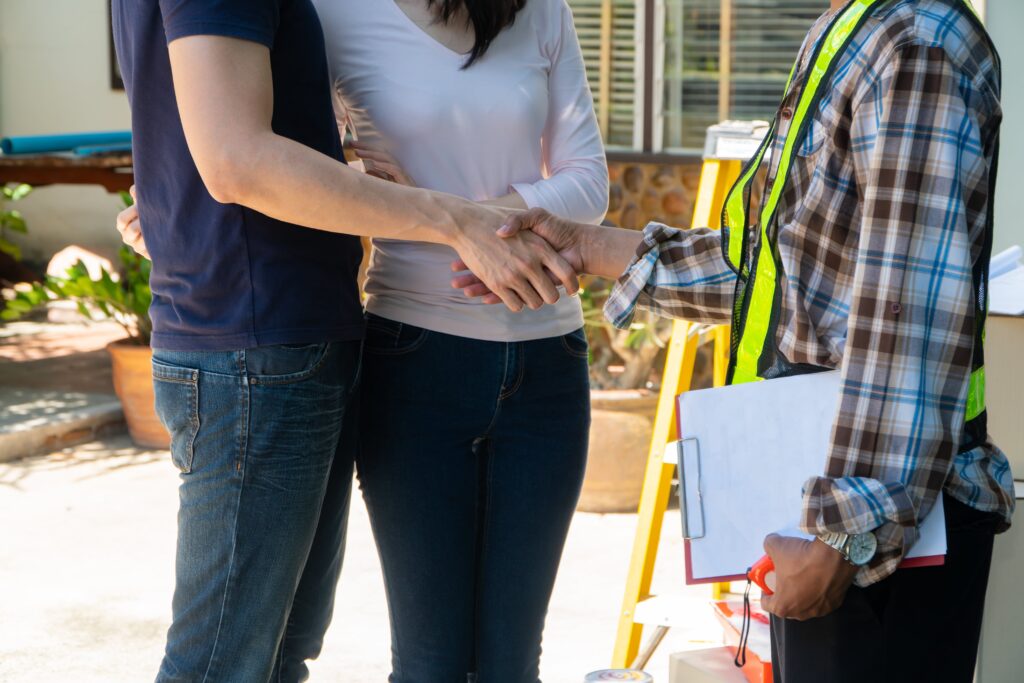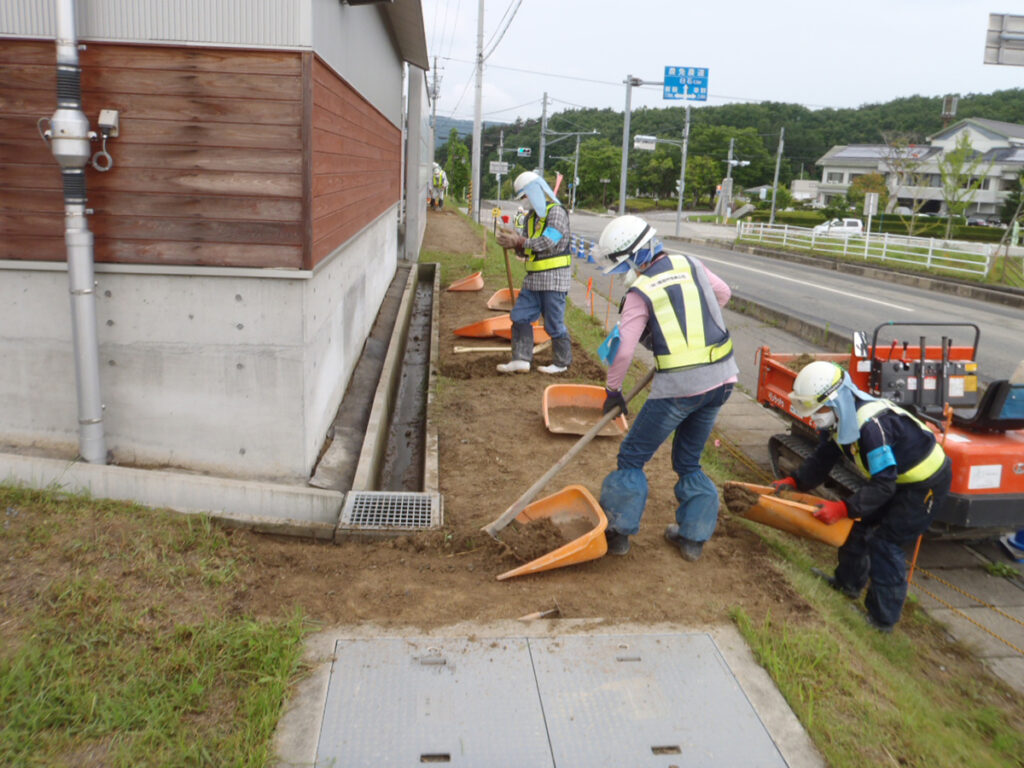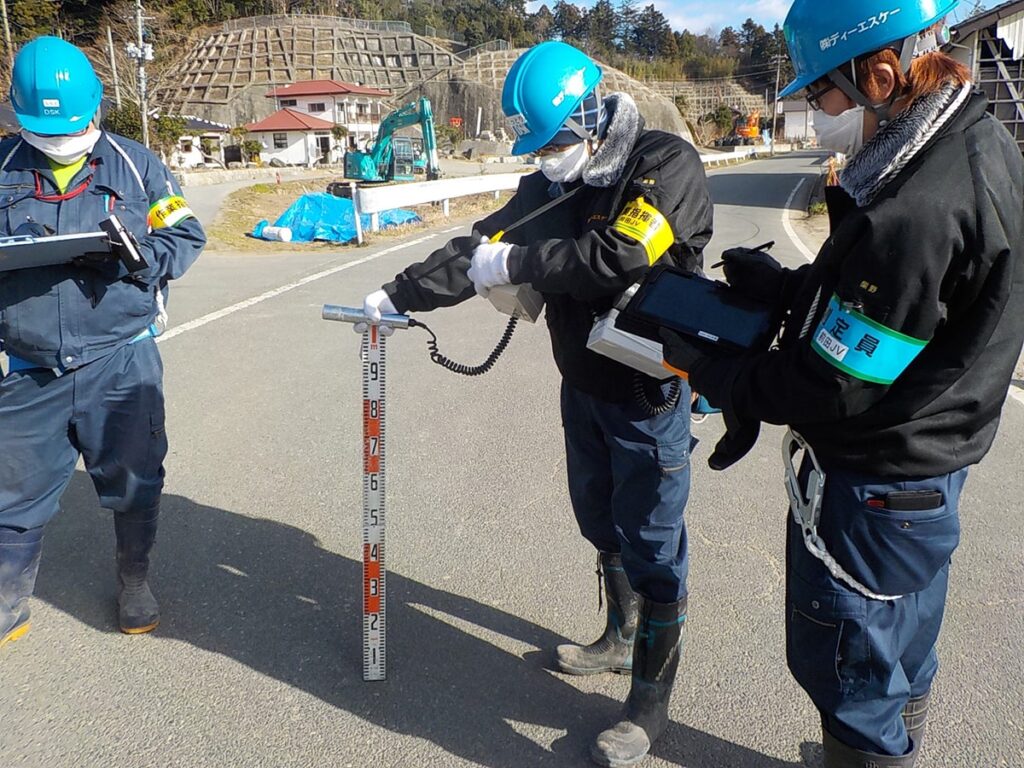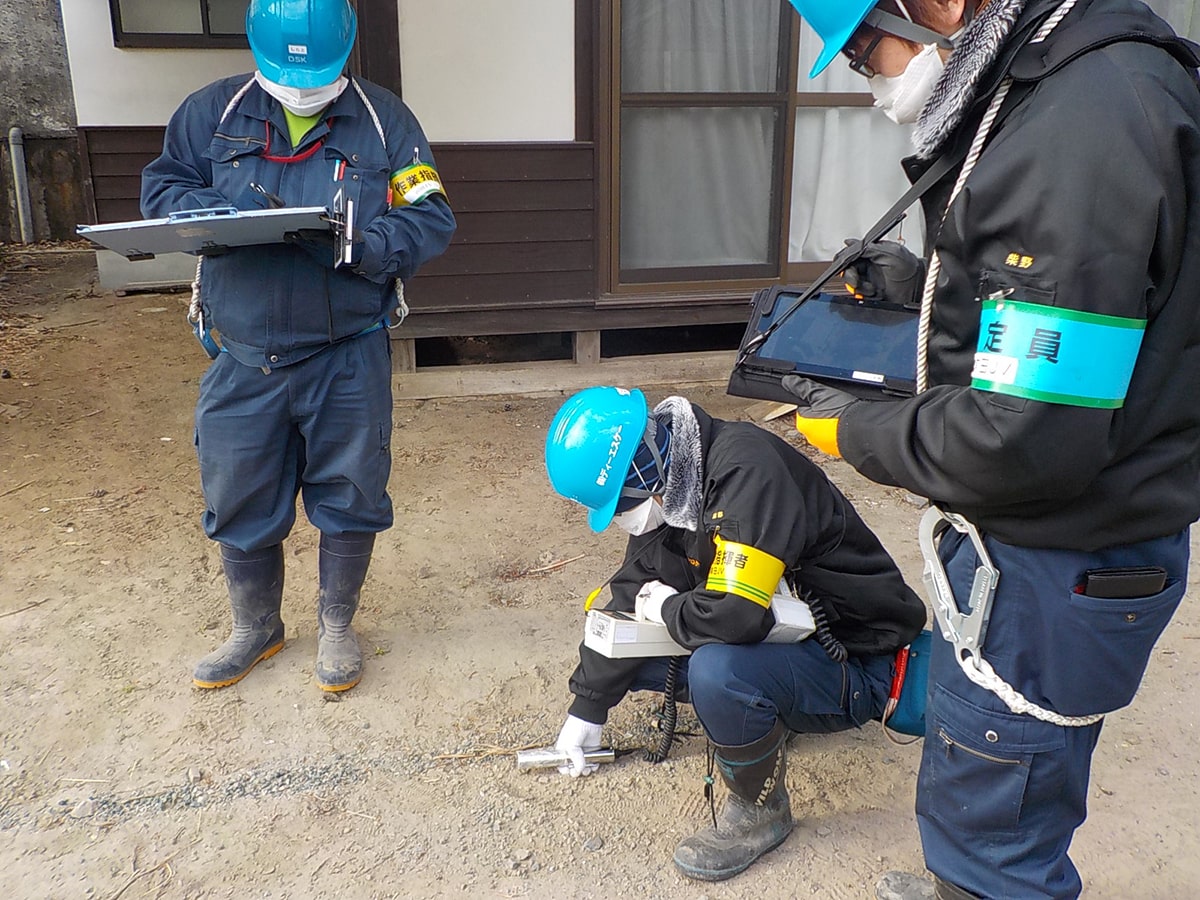Reference of the picture: Decontamination Archive Site
Hello, everyone. My name is Daichi, an expert providing the information on the radiation issues in an easy-to-understand manner.
In this article, objective and basic concept of decontamination were covered, but this time, I would like to respond to the following question:
‘How are decontamination activities implemented?’
Table of contents of this article
- Six procedures of decontamination
- Investigation of land and residences/buildings
- Monitoring before decontamination etc.
- Establishment of decontamination plan
- Acquisition of consent
- Decontamination
- Monitoring after decontamination etc.
- Summary
I have been involved with the radiation-relevant issues, like the policy on the decontamination activities and the management of the Interim Storage Facility, after the accident of the Fukushima Daiichi Nuclear Power Plant in 2011.
I received a doctorate in the field of radiation, while working in Fukushima.
Six procedures of decontamination

It is possible to subdivide the procedures more into detail, but here the following main 6 procedures are covered, so that rough procedures of decontamination activities can be grasped.
Investigation of land and residences/buildings

First, decontamination activities usually begin with identifying landowners and legally relevant people, in order to enter the properties before implementation of decontamination.
It could be easier to identify the relevant people, if there are residences and people live there, but of course there are a lot of cases, for example, that lands such as farmlands, other than residences, could be candidates for decontamination.
It could be possible, for landowners or relevant people of farmlands to be identified, if the farmlands are cultivated.
It would be difficult, however, for the relevant people to be identified, in case of farmlands which are uncultivated for a long time, or forest area, where sometimes boundaries are not well-defined.
In addition, decontamination activities are implemented basically after the unexpected events like accident of nuclear power plants.
Therefore, sometimes residents are possibly forced to evacuate or relocate and don’t live there.
In this case, each relevant people were identified, through contact by phone, or access to the information on public registration.
Taking this opportunities, it was tried for residents to be informed of decontamination activities as much as possible, followed by acquisition of consent covered below.
Monitoring before decontamination etc.

Once the landowners or relevant people are identified and necessary consent is acquired, monitoring before decontamination, or other necessary activities are conducted on actual sites, including measurement of air dose rate.
Why is it necessary for these procedures to be implemented, before the decontamination activities?
In this article, the following three points are touched.
– Consideration of specific spots and measures of decontamination
– Evaluation of decontamination effect
– Check of condition of decontaminated objects
Consideration of specific spots and measures of decontamination
Decontamination activity is one of the measures of the radiation protection, therefore, it needs to comply with three fundamental principles of radiation protection (Please see this article regarding the principles).
To keep it complied with the principles, it is crucial to understand accurately the condition of contamination of targeted objects and to apply appropriate measures for decontamination, which are appropriate for the site (Regarding the decontamination please see this article).
Not only the reduction of radiation dose, but also the management of waste generated and its disposal, as well as social acceptance need to be taken into account.
Therefore, it is essential to understand circumstances and situation of actual site as precise as possible.
Evaluation of decontamination effect
The effect of decontamination at any cost needs to be evaluated, once it is finished.
There are a variety of approach for the evaluation, but when it comes to the decontamination activities after the environmental contamination in wide range of area, usually the air dose rate at a certain distance (e.g. 1cm, 50cm, 1m) above the ground is monitored and used for the evaluation.
On actual decontamination sites, even small changes of monitoring points or direction lead to big difference of the results of air dose rate, therefore it is important to keep the monitoring condition consistent between before and after the monitoring (e.g. same points, same direction, same height above the ground).
Check of condition of decontaminated objects
Not only works in terms of radiation protection including monitoring of air dose rate, but also works in terms of the civil engineering are necessary.
One of the important examples is to check out condition of decontaminated objects.
When considering specific measures of decontamination, materials of the objective, condition of age deterioration, damage condition of properties also need to be taken into account.
It needs to be done in advance, to confirm the condition of the properties and record them, followed by necessary confirmation of landowners, in order to avoid unnecessary troubles after the decontamination with them.
Establishment of decontamination plan

After the abovementioned pre-monitoring, it moves on to the procedure to establish a more specific plan for decontamination activities.
Based on the investigation results, a comprehensive plant including damage condition, specific objective as well as methods will be established.
Decontamination activities are implemented focusing on not only an individual object such as a residence, or a facility, but also on more wide range of area, including administrative area, municipality, prefecture, whole country, and so on.
Therefore, the plan needs to be established, in harmony with the other plans.
Acquisition of consent

When the decontamination plan is established, residents or landowners are informed of the plan, including objectives or specific methods, at the site for the decontamination, as much as possible.
Taking this opportunities, people sometimes provide details on the implementation of decontamination (e.g. what are needed to be decontaminated or not), therefore it needs to be discussed and coordinated accordingly.
If people can’t come to the site for some reason, such as evacuation or relocation, they are informed of the plan by using phone, or by visiting the places for the evacuation or relocation.
Moreover, when landowners can’t be identified, due to the inheritance of the properties or other reasons, the information of decontamination (e.g. methods, address) are sometimes open to public on the official gazettes for a certain period of time, before moving on to the next step.
Decontamination

Reference of the picture: Decontamination Archive Site
If consent of relevant people is acquired, actual decontamination activities begin.
As touched on above, decontamination activities are implemented not for individual object, but in a certain range of area or region, such as administrative area in a municipality.
Therefore, the decontamination activities are implemented, not immediately after the acquisition of consents for an object, but after the acquisition of consents, in the wide range of area or the region to some extent.
Specific methods for the decontamination are different between the objects decontaminated, and details will be covered taking another opportunities when necessary.
Monitoring after decontamination etc.

Reference of the picture: Decontamination Archive Site
Once the decontamination activities finish, post-decontamination monitoring is first conducted, in order to review the effect of the activities.
The effect of the activities needs to be at all cost evaluated.
As shown in the section: ‘Evaluation of decontamination effect’, when the effect of decontamination activities is evaluated, which are conducted as one of the responses to a wide range of environmental contamination, air dose rates at a certain distance above the ground (e.g. 1cm, 50cm, 1m) are usually monitored using survey meter.
The effect of the decontamination activities is evaluated by the reduction rate of the air dose rate and the result is reported later on to landowners or relevant people.
Sometimes the post-decontamination monitoring is conducted again after certain period of time passes at the same spot, after the implementation of decontamination, in order to review that the effect of the decontamination is maintained or not.
This is supposed to be done, because radioactive materials could move with soil to bottom part of slope, for example, due to the impact of rain or wind.
It could be possible, that the decontamination activities are once more implemented, if some conditions are met, for example, the effect of decontamination activities are not maintained, but this is rather exceptional and this issue will be explained in detail in another article.
Summary
In this article the following 6 procedures of decontamination activities are covered.
・Investigation of land and residences/buildings
・Monitoring before decontamination etc.
・Establishment of decontamination plan
・Acquisition of consent
・Decontamination
・Monitoring after decontamination etc.
Implementation of decontamination activities doesn’t require advanced technology like other large-scale civil engineering (e.g. construction of dams, bridges), but rather they seem to projects with more social aspect, in which a variety of interested parties are involved.
In other words, it can be said, that they are promoted with understanding and cooperation of a lot of interested parties.
By the way, abovementioned contents are summarized in the following videos.
It would be appreciated to visit them at your convenience.
– Japanese version
– English version
You can read the same article in Japanese here.
Thank you very much for reading this article.
See you next time!



コメント